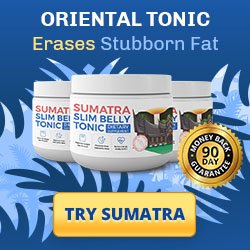Rewrite the
“Pharmaceutical-grade” has become one of the beauty industry’s favorite buzzwords, promising results that sound as clinical as they do luxurious. But the term isn’t as straightforward as it seems. For some brands, it reflects years of research and medical-level precision; for others, it’s more of a marketing move. The question is, what truly makes a product pharmaceutical-grade—and who gets to decide?
“Pharmaceutical-grade skin care refers to products that meet the highest standards of purity, efficacy and safety,” says Jill Sanderson, director of marketing at Vivier, a Canadian company that has been perfecting pharmaceutical-grade formulations for more than 25 years. “These formulations are backed by rigorous clinical research, manufactured under Good Manufacturing Practices (GMP) and ISO standards and composed of USP-certified ingredients.”
Every Vivier product is created with the same precision as a prescription formulation—a level of care that far exceeds industry requirements. “Many of our ingredients are USP-certified, meaning they meet or exceed the strict standards of the United States Pharmacopeia for strength, quality and purity,” Sanderson explains. “Every formula is carefully designed with precise concentrations of active ingredients to ensure optimal penetration into the skin, maximizing efficacy. Results are everything to us, hence our tagline: ‘The Beauty of Results.’”
While she praises the level of customization, Dallas dermatologist Elizabeth Houshmand, MD says it is important to understand how the term “pharmaceutical-grade” is viewed from a regulatory standpoint in the United States. “Pharmaceutical grade is a marketing term,” she says. “Currently, there are no FDA standards for what can be called ‘medical-grade’ skin care.” She explains that products labeled “medical-grade” often feature higher-quality, evidence-based ingredients and have undergone safety and efficacy testing, but they are still considered cosmetics under FDA regulations.
“The FDA regulates all cosmetics to ensure they are safe and properly labeled, but it does not approve them for effectiveness or guarantee that the claims on the label are accurate,” Dr. Houshmand says. “These products often have a scientific basis, clinical studies and are sold through professional channels like dermatology offices, but they do not require a prescription to purchase.”
In other words, “medical-grade” or “pharmaceutical-grade” skin care is not the same as prescription skin care. “Prescription products contain high concentrations of active ingredients and are regulated as drugs, requiring a doctor’s oversight,” she explains. “Non-prescription products, even those labeled ‘medical grade,’ are regulated as cosmetics.” The benefit, she adds, “is that they’re typically recommended and sold under the guidance of a professional—a dermatologist or aesthetician—who can customize the products to an individual’s specific needs.”
Sanderson agrees that education and transparency are key. “OTC products are designed for broad consumer use, typically with lower concentrations of active ingredients,” she says. “Prescription products, on the other hand, contain the highest potency actives and require physician oversight. Pharmaceutical-grade skin care delivers higher concentrations of clinically validated actives than OTC products but without the barrier of a prescription. Because these formulations are dispensed through physicians, dermatologists and authorized medical spas, patients receive professional guidance while accessing advanced, science-backed skin-care solutions.”
A prime example of that approach is Crème 47, one of Vivier’s most celebrated recent launches. “Outside of our vitamin C category—the cornerstone of our brand—Crème 47 underscores Vivier’s ability to merge pharmaceutical-grade efficacy with a luxury skin-care experience,” says Sanderson. “The number 47 represents the 47 meticulously selected ingredients that address seven essential skin functions, including hydration, barrier support, antioxidant defense, collagen and elastin production, hyperpigmentation, texture and inflammation. Our clinical trial results show that it works. With so many active ingredients, formulating it to remain stable while maintaining quality and efficacy was complex, but within the context of pharmaceutical-grade standards, it’s one of our proudest achievements.”
Vivier’s expertise extends across borders, navigating both Health Canada and FDA regulations. “Certain active ingredients are classified and regulated differently depending on the market,” Sanderson notes. “For example, sunscreen filters vary regionally and hydroquinone—considered the gold standard for addressing hyperpigmentation—has different availability in each country.”
For Sanderson, pharmaceutical-grade skin care isn’t a fleeting trend but a reflection of how far consumer expectations have evolved. “It’s not a passing trend, it’s a permanent shift,” she says. “Customers today demand more than just promises; they want clinical proof, transparency and real, measurable results.”
She also sees that shift spanning generations. “Younger demographics are turning to these products for prevention, while more mature patients rely on them for correction,” she adds. “Ultimately, anyone looking for physician-dispensed skin care that outperforms typical retail options will benefit from pharmaceutical-grade formulations. Vivier is proud to lead the way in making these solutions both effective and luxurious.”
As Dr. Houshmand sums it up, the most important thing for consumers is to be informed. “Whether a product is called medical-grade or pharmaceutical-grade, what truly matters is the science behind it, the integrity of the formulation and the guidance of a trusted skin-care professional.”
in HTML format to be seo optimized related to this title Should You Be Using ‘Pharmaceutical-Grade’ Skin Care? Experts Explain
. Create appropriate headings and subheadings to organize the content. Ensure the rewritten content is approximately 1000 words. Ensure to strip all images from final output i dont need images.At the end of the content, include a “Conclusion” section and a well-formatted “FAQs” section.Ensure there are no additional notes and introductory text in the final output.Final output is gonna publish directly as post content so keep in mind provide only rewritten post content without any introductory text or notes in result and kindly dont explain what you done or what you provided as output of this prompt
Recommended Products:
-

Total Beauty Hyaluronic Acid, Keratin & Biotin Capsules 90 ct.
$11.64 Buy Now -

KADUKKAI Powder (Terminalia Chebula/Haritaki) – Fresh & Pure (1/2 Lb, 8 oz)
$12.95 Buy Now -
Sale!

Reserveage Beauty, Collagen Replenish Chews, Supplement for Skin Care and Hair Growth, Supports Collagen and Elastin, Nail Care Supplement, 60 Soft Chews (20 Servings)
Original price was: $23.46.$17.59Current price is: $17.59. Buy Now



